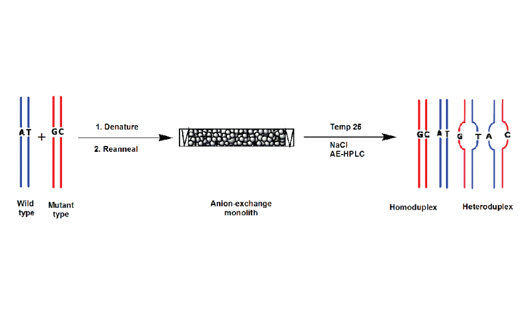"Temperature-independent detection of heteroduplex and homoduplex fragments applying poly(glycidylmethacryate-co-divinylbenzene) based-monoliths modified to strong anion-exchanger"
DOI:
https://doi.org/10.17344/acsi.2014.1243Keywords:
Strong anion-exchanger (SAX), Monolith, Glycidylmethacrylate-co-divinylbenzene, Homoduplex and heteroduplex fragmentsAbstract
Monoliths of poly(glycidylmethacrylate-co-divinylbenzene) were prepared in the confines of presilanized borosilicate glass columns (100x3 mm I.D.). These monoliths were surface modified into strong anion-exchangers with hydrochloric acid (10 %) and triethylamine, successively. The strong anion-exchanger established good separation of 5-phosphorylated oligodeoxythymidylic acids fragments [d(pT)12-18]. Moreover, heteroduplex and homoduplex fragments of a low-range mutation standard [of STS marker from the Y-chromosome (209 bp)] were separated at ambient and elevated temperatures using sodium phosphate buffer and a gradient former of sodium chloride, in anion-exchange chromatography (AE-HPLC). This is a step forward for mutation detection as temperature-independent method, which is not the case in denatured ion-paired reversed-phase chromatography (D-IP-RP-HPLC), where mutation detection is temperature critical and might be bypassed if temperature changes slightly. Finally reproducibility check from run-to-run and monolith-to-monolith showed a relative standard deviation (RSD) of less than 2 %.

Additional Files
Published
Issue
Section
License
Except where otherwise noted, articles in this journal are published under the Creative Commons Attribution 4.0 International License
